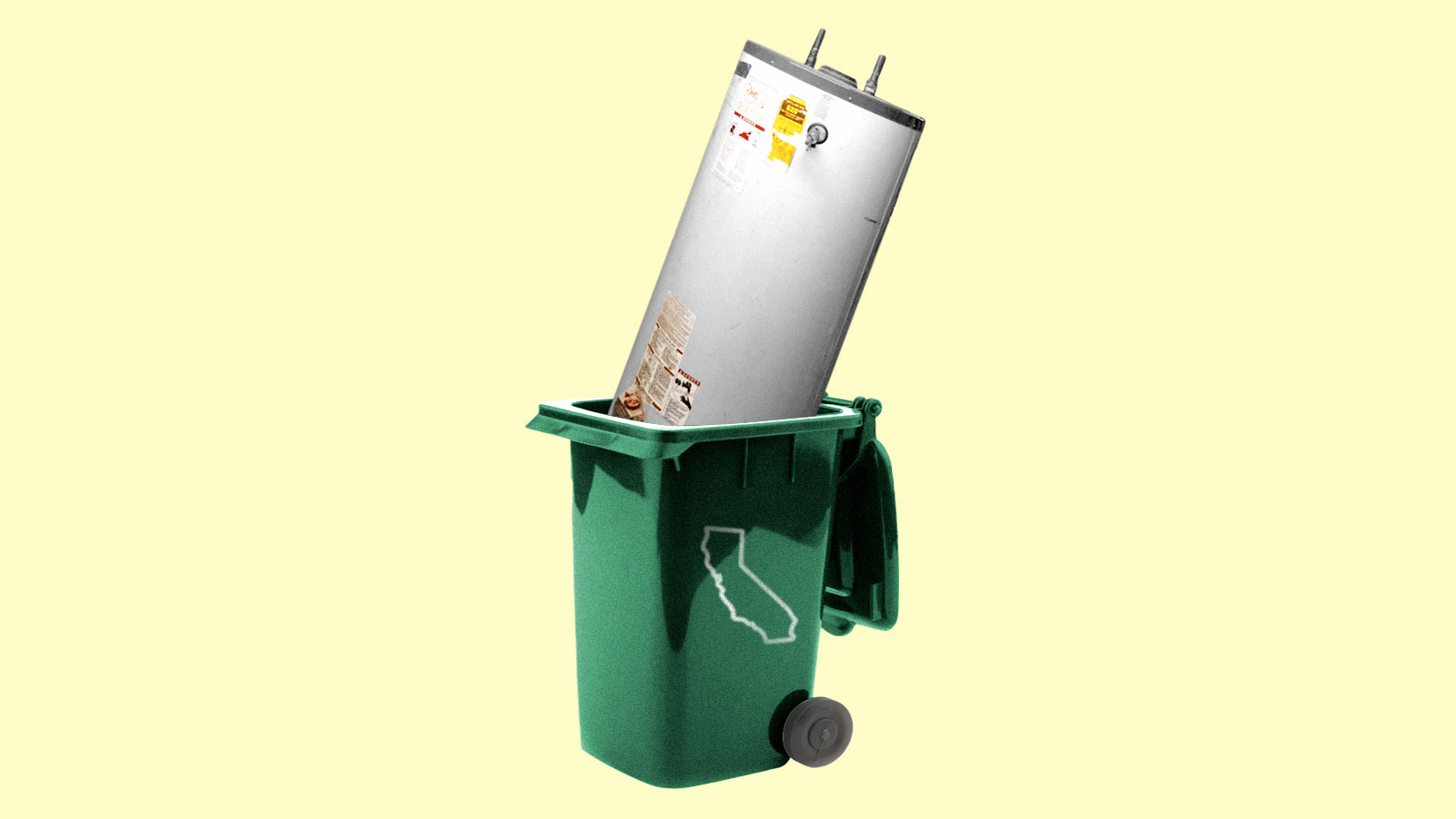California regulators voted unanimously last week to develop new rules that would effectively ban the sale of natural gas-powered heating and hot water systems, a first-in-the-nation commitment. The California Air Resources Board, or CARB, an agency that oversees the state’s climate targets and regulates pollution, passed the measure on Thursday as part of a larger plan to cut greenhouse gas emissions and comply with federal air quality targets.
Beginning in 2030, homeowners in California looking to replace their furnace or hot-water heater will only be able to purchase zero-emission appliances. Regulators expect this to primarily mean a switch to heat pumps — very efficient electric devices that can both heat and cool homes — as well as heat pump water heaters.
It will be the first legal mandate in the country designed to purge natural gas from existing buildings — in contrast with past policies aimed at stopping new developments from using the fuel.
“We are celebrating this historic win as California becomes the first state to end the sale of polluting fossil fuel appliances,” said Leah Louise-Prescott, a senior associate at the clean energy think tank RMI. “California’s leadership sets a clear example for other states to follow in their transition to a healthy, all-electric future.”
The use of fossil fuels in homes for space and water heating, drying clothes, and cooking food is responsible for about 10 percent of U.S. carbon emissions. California municipalities have been at the vanguard of tackling these emissions for several years now, beginning in 2019 when the city of Berkeley passed an ordinance preventing new developments from hooking up to the gas system. Cities around the state and across the country have since followed with similar policies, including Los Angeles, New York, Seattle, and, most recently, Chicago.
California has also led the way at the state level. Last year it adopted a landmark building code change that strongly encourages all new buildings in the state to forgo gas hookups. And earlier this month, the Golden State’s utility board took another pioneering step to end subsidies for gas line extensions to new buildings. In many states, utilities do not charge new customers the full cost of extending a gas line to their building — instead incorporating those costs into rates and spreading them across their customer base.
“By eliminating these subsidies, we eliminate a financial incentive that is now a perverse incentive,” Clifford Rechtschaffen, one of California’s utility commissioners, said at the time. “An incentive for expanding the gas system to serve new homes and commercial facilities as opposed to building those facilities completely electric.”
But restricting gas in new buildings only stops the problem from getting worse — it doesn’t do anything to move California closer to its goal of cutting emissions to net-zero by 2045. Encouraging existing homes to replace gas heating appliances with heat pumps will not only cut emissions in the winter. It could also cut peak energy demand during heat waves, reducing the risk of electricity shutoffs, since these systems are typically more efficient than stand-alone air conditioners.
Amy Turner, a senior fellow at Columbia Law School’s Cities Climate Law Initiative, said that there are a range of local policies that address emissions and energy use from existing buildings around the country, but they don’t target gas specifically. For example, New York City’s local law 97 requires buildings to ratchet down their emissions over time. “Some building owners may choose to switch out gas for electricity in order to comply, but they could also comply by reducing emissions or energy use in other ways,” said Turner. A much-celebrated plan in Ithaca, New York to electrify all of the city’s buildings by 2030 relies on incentives and ultimately will require voluntary participation from building owners.
Policies to ban gas in buildings have been fiercely opposed by the natural gas industry, which has successfully lobbied for many Republican-led states to prohibit municipalities from restricting gas use. The American Gas Association, an industry group, has its own plan to cut emissions that relies heavily on switching to lower-carbon fuels like biogas derived from waste.
Thursday’s vote was not solely motivated by California’s climate goals. Gas-powered appliances are also a significant source of air pollution. One study published last year found that pollution from residential buildings in the U.S. now harms more people than that of power plants; it caused nearly 6,000 premature deaths in 2017 alone. According to CARB, gas appliances in California emit four times the amount of nitrogen oxide, or NOx, pollution as the state’s electric utilities, and nearly two-thirds the NOx emissions from cars. NOx pollution is a precursor to smog, and exposure to NOx can lead to the development of asthma or aggravate existing respiratory conditions.
In August, the Sierra Club and 25 other environmental groups petitioned the Environmental Protection Agency to adopt NOx performance standards for furnaces and water heaters — a very similar proposal to the one CARB just approved, but at the national level. At the time, the American Gas Association issued a statement saying such a measure would “impose undue burdens on consumers at every step of the process, including our most vulnerable communities.”
But at least in California, funding is in place to relieve that burden. The state’s most recent budget, passed in June, includes $1.4 billion to decarbonize buildings, with most of the funding earmarked for low-income families.
Brandon Dawson, the director of Sierra Club California, said the new rules combined with this funding “can ensure not only emissions reductions but also access to electric appliances for all Californians.”



